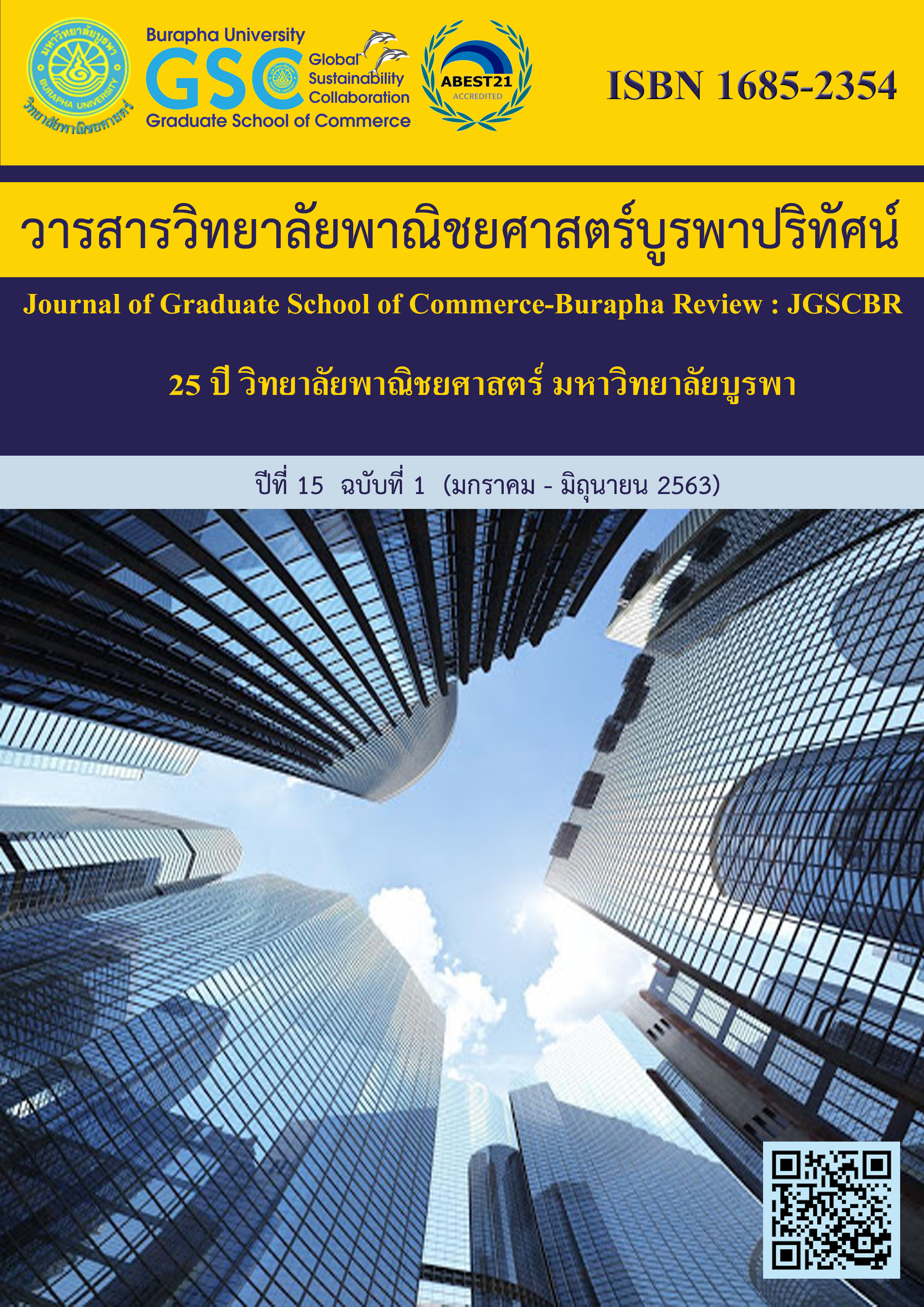THE ENHANCEMENT DYNAMIC CAPABILITIES OF AGILITY ENTERPRISE AND AGILITY SUPPLY CHAIN MANAGEMENT ON RESPONSIVENESS FOR CREATING SUSTAINABLE COMPETITIVE ADVANTAGE.
Main Article Content
Abstract
In this dissertation, the researcher analyzes the enhancement of dynamic capabilities by enterprises on agility enterprises, agility supply chain management, enhanced dynamic capabilities, responsiveness, and sustainable competitive advantage for manufacturers of the footwear industry in the Kingdom of Thailand (Thailand). The researcher also compares factors influencing the sustainable competitive advantage of these manufacturers owning brands and original equipment manufacturers (OEM). Finally, furthermore, the researcher investigates factors influencing the sustainable competitive advantage of the footwear industry in Thailand.
In this mixed-methods research approach, the researcher employed both quantitative and qualitative research methods. For the quantitative phase of research, the researcher constituted a sample of 250 Thailand footwear manufacturers, using a questionnaire as an instrument of the research. In the qualitative phase of research, the researcher carried out individual in-depth interviews with key informants. The informants were 16 Footwear manufacturing administrators. Findings are as following: agility enterprises, agility supply chain management, enhanced dynamic capabilities, responsiveness, and sustainable competitive advantage exhibited relationships between variables clearly in consonance with the guidelines of the Footwear manufacturers on the EDC Agility Enterprise model. Sustainable competitive advantage was influenced by Agility enterprises, agility supply chain management, and enhanced dynamic capabilities of enterprises and exerted effects on responsiveness at a statistically significant level. The brand owners group paid attention to responsiveness at a higher level than the OEM group. Moreover, responsiveness exhibited a direct influence on the sustainable competitive advantage of the group of brand owners, while evincing direct influence on the OEM group, but not at a statistically significant level.
Article Details
The owner of the article does not copy or violate any of its copyright. If any copyright infringement occurs or prosecution, in any case, the Editorial Board is not involved in all the rights to the owner of the article to be performed.
References
Babaei, H., Ramesani, A., & Khanuki, A. A. (2013). Developing a model for agility of business organizations based on supply chain processes: A case study of automobile industry in Iran. Australian Journal of Basic and Applied Sciences, 7(4), 750-759.
Barney, J.B. (2012). Purchasing, supply chain management and sustained competitive advantage: The relevance of resource based theory. Journal of Supply Chain Management, 48(2), 3-6.
Gizawi, N.E.(2014). The dynamic capabilities theory: Assessment and evaluation as a contributing theory for supply chain management. Enschede, Netherlands: University of Twente., 1-14.
Harraf, A., Wanasika, I., Tate, K., & Talbott, K. (2015). Organizational Agility. Journal of Applied Business Research, 31(2), 675-686.
Moniruzzaman, M., Kurnia, S., Parkes, A., & Maynard, S. B. (2015). Business intelligence and supply chain agility. Australasian conference on information systems, Adelaide, South Perera, S., Soosay, C., & Sandhu, S. (2014). Does agility foster sustainability: Development of a framework from a supply chain perspective. University of South Australia Business School. Adelaide, Australia., 1-19.
Ringle, C. M., Wende, S., & Becker, J. M. (2015). Smart PLS. Boenningstedt, Germany: GmbH. ค้นเมื่อ 20 กันยายน 2561 จาก http://www.smartpls. com., 151
Sapra, G. (2016, July). Enterprise agility: Positioning the right mix of drivers and enablers. NIMHANS convention centre, Bengaluru, Karnataka., 1-15.
Sharifi, H., & Zhang, Z. (1999). A methodology for achieving agility in manufacturing organizations: An introduction. International Journal of Production Economics 62(2), 7-22.
Sherehiya, B., Karwowski, W., & Layer, J. K. (2007). A review of enterprise agility: Concepts, frameworks, and attributes. International Journal of Industrial Ergonomics, 37(5), 445-460.
So, S., Parker, D., & Xu, H. (2012, June). A conceptual framework for adopting sustainability in the supply chain. Paper presented at the conference ANZAM operations, supply chain & service management symposium, Melbourne, Australian., 1-17.
Teece, D. J. (2007). Explicating dynamic capabilities: The nature and micro foundation of (sustainable) enterprise performance. Srinagarind Medical Journal, 28(13), 1319-1350.
Tseng, Y.-H., & Lin, C.-T. (2011). Enhancing enterprise agility by deploying agile drivers, capabilities and providers. Information Sciences, 181(17), 3693-3708.
Triaa, W., Gzara, L., & Verjus, H. (2016, August). Organizational agility key factors for dynamic Business process management. Paper presented at the conference on the 18th IEEE conference on business informatics. Paris, France. pp.1-11
Wang, R. (2011). A taxonomical study of agility strategies and supporting supply chain management practices. Exeter, England: University of Exeter., 79-94.


